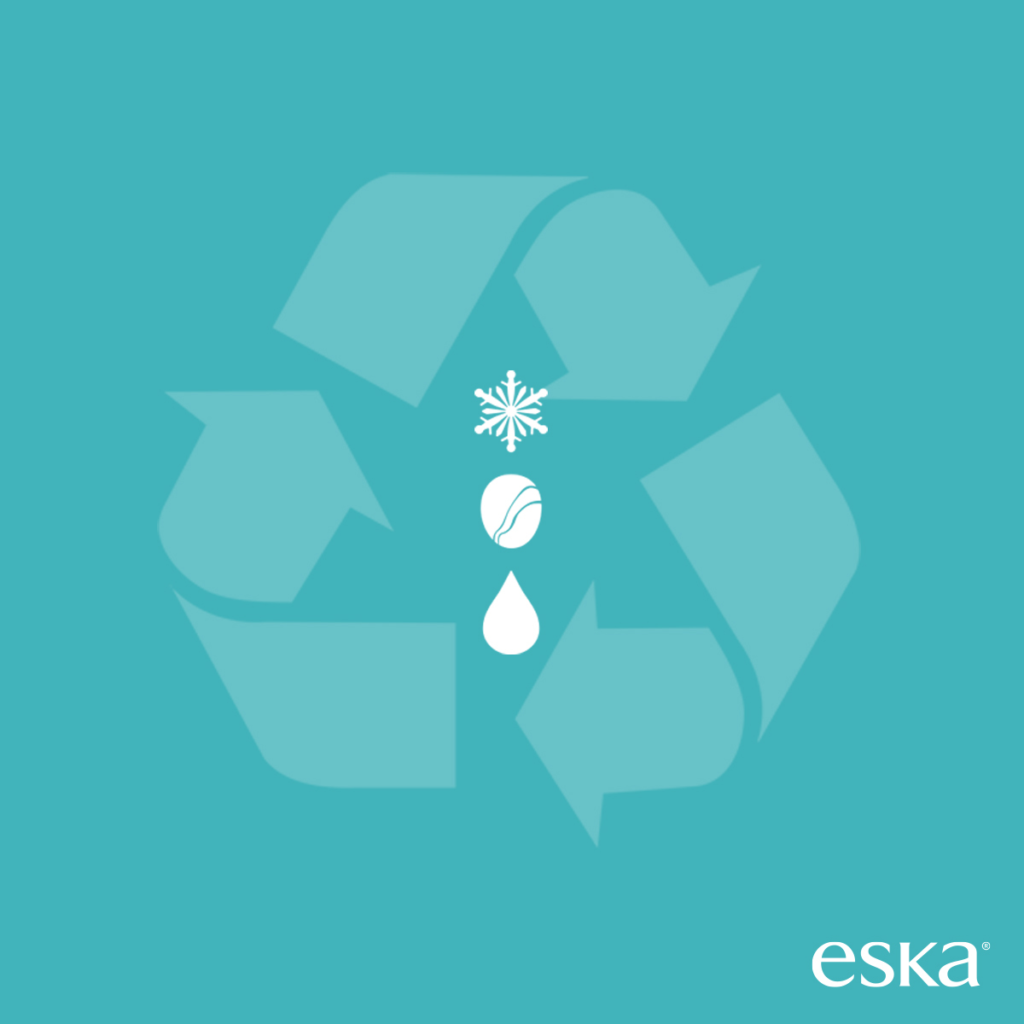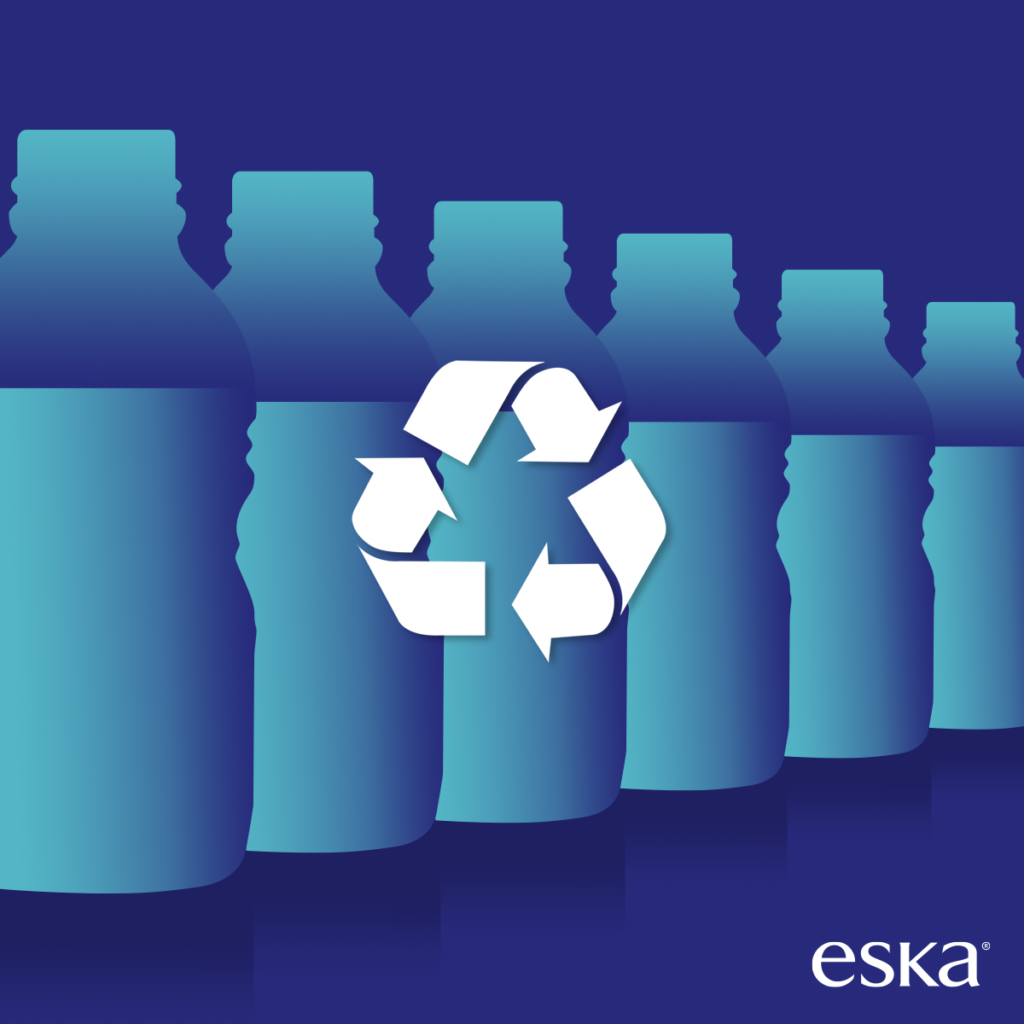rPET, explained: a more sustainable water bottle solution
As we all work towards building a more sustainable future, our recycling ventures can turn old plastics into new treasures. Let’s take a closer look at rPET—what it is, how it’s made and why it’s a more eco-friendly choice for our planet.

From PET to rPET: recycling everyday plastics into new treasures
Whenever you grab a plastic water bottle on the go, chances are it’s made of PET. PET (which stands for polyethylene terephthalate) is a lightweight, resin-based polyester. It’s made by processing and melting crude oil and natural gas, which can then be spun into fabrics or moulded into plastic containers. Once PET products have been used, they can be recycled and revamped. This reprocessed PET is known as rPET, or recycled PET, and it can be transformed into a range of everyday products like reusable grocery bags, bedding, and even clothing. Most importantly, it can be turned back into new bottles that can be recycled again and again, unlike other items that will end up in a landfill at the end of their useful life. Eliminating the need to produce new plastic: that’s the difference between second life and re-cycle of life… For a list of products made of recycled materials, visit Recyc-Québec’s website.
The rPET process: from water bottle to winter coat
Did you know that your water bottle from the corner store can be turned into fabric to make your winter coat? This transformation process involves collecting the water bottles, compressing them into bales and transporting them to a recycling facility. There, the bales are broken apart and the PET is sorted from other plastics. The PET is then crushed into small flakes and put through another separation process to clean it and get rid of any remaining contaminants or toxins. From there, the flakes are dried, cooled and chopped into tiny pellets, which can then be further processed and/or melted to create new packaging or fibres for clothing, blankets and a range of other materials.
The clean benefits of rPET bottles
It feels good to know you’re using recycled products. But rPET bottles have a bunch of other benefits, too.
Sustainability
rPET leaves a smaller carbon footprint. It’s 100% recyclable, from the cap and bottle right down to the label. Not only can it be cleaned and reused, it can also be recycled over and over again. By recycling PET, we cut down on waste in landfills and reduce the need to create virgin PET, which takes a toll on our natural resources. Creating a plastic water bottle from 100% recycled material uses 75 percent less energy than creating new PET. Why use single-use plastics when rPET offers a more sustainable option for our planet? Find out more about the impact of using PET versus rPET on Éco Entreprises Québec’s website.
Durability
Made from recycled plastic, rPET is a strong, flexible, lightweight, chemical-resistant, safe and shatterproof packaging solution. Just as strong as their PET counterparts, rPET bottles are built to last so you never have to worry about knocking them off the table.

The infinite possibilities of rPET
Besides plastic water bottles, you’d be surprised to learn what recycled plastics can become. More and more companies are using rPET to make their packaging and a range of other things, contributing to a more sustainable future.
Bottles
Both rPET and PET bottles are easy to spot thanks to the #1 recycling symbol on their labels. And if a bottle is made using recycled plastics, it will likely be indicated on the bottle. Generally speaking, companies want the public to know that they’re using more sustainable approaches to make their products and packaging. It’s important that customers understand what they’re purchasing, so they can make informed decisions about the products and companies they support.
Clothing and more
Many Canadian companies are leading the way in sustainability by using recycled plastics in their product lines. BKIND, a Montreal-based beauty brand, uses 100% recyclable bottles for its products. And Norden creates jackets and outerwear from recycled plastics. The list goes on and on. Check out the CBC’s amazing list of green gifts for special occasions.
As you can see, the life of your plastic water bottle doesn’t have to end once you’re done with it. It can be transformed into a brand new product over and over again. Companies like Eska are partnering with recycling facilities and are using more recycled materials to make their products, showing customers that they’re committed to sustainability while making a positive difference for our planet.

One Response to “rPET, explained: a more sustainable water bottle solution”
Comments are closed.
- Published on , in
- The Recycle of Life
share
Read also
See all
February 10, 2023 at 11:31 am, What Is rPET? Everything You Need to Know about rPET Plastic Products said:
[…] statistically speaking, creating plastic water bottles from entirely recycled material uses 75% less energy compared to making the PET from the ground […]